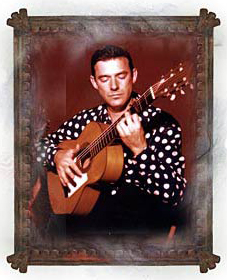
Excerpts from Donn D.E. Pohren’s book the Art of Flamenco
Note to the as of yet uninitiated: prepárate chingones, for this is basically la santa biblia de flamenco.
I.
…Throughout this book the reader will find constant reference to two basic poles of flamenco, the authentic-traditional and the popular-com-mercial. the main difference between these opposite poles lies in the types of innovations and creations that make them up; those of the authentic-traditional school always fall within certain well-defined bounds of good flamenco; those of the popular-commercial school are nearly always catchy and worthless, eagerly accepted by the popular public, and then quickly forgotten. In other words, the authentic-tradi-tional flamenco has lasting value, the popular-commercial little to no value.
Flamenco is often compared with jazz. This is logical and reasonable. Both served as emotional outlets for oppressed and underprivileged people; and both are losing their significance as these conditions are alleviated by progress. And in both, this lost significance is being re-placed by meaningless virtuosity and sophistication.
We can go one step further and speculate on the types of fla-menco that would closely approximate various trends in jazz. The prim-itive, traditional flamenco, for instance, matches up with the authentic blues; concert (progressive) flamenco runs parallel to progressive jazz; and such forms as be-bop and rock n’ roll go hand-in-hand with the many impurities prevalent in today’s commercial-tablao flamenco…
II. EVOLUTION
…Flamenco…has changed drastically. “Evolution” is the key concept here, a term used by the flamenco to justify whatever changes and additions to traditional flamenco they wish to impose. In very few instances such alterations have been welcome. In most, they have been highly unfortunate.
The most drastic change has been the destruction of the very base upon which flamenco was constructed: its way of life. Flamenco was always a living expression: Andalusia was permeated with it. The Cante was everywhere: in the bars, ventas, bodegas and tabancos: in juergas, both spontaneous and organized: in the streets: in the fields: wherever there were workers, no matter what task they were performing: from the riders of horses and beasts of burden during their slow treks; without exaggeration, everywhere. The dance was featured in all celebrations, and the guitar played an increasingly important role as time went by. During the past forty years this living expression of flamenco has largely been swept away by the rush and noise of progress, and has been replaced by theatricality. Flamenco exists today nearly exclusively on stages throughout Spain and the world, and plays mostly to audiences little versed in the real thing…
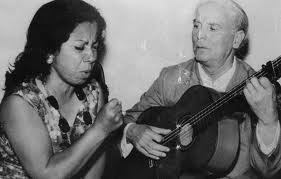 A direct result of the disappearance of flamenco’s life style is the flamenco vacuum in which the present generations are brought up. With very few exceptions, their world is anything but living and breathing flamenco from the time they are born, as it used to be. Rather, they are steeped in discotheques and TV and other thoroughly unflamenco influences. In such an atmosphere the youth who do choose the flamenco road change it to their liking. They know little of flamenco’s tradition and do not relate to it. In its place they tend to substitute the outside influences to which they have been exposed via modern communications since birth. This coupling is called fusion, a phenomenon that has always existed in all of the arts, but in a slow, over-the-years manner. Today it is nearly instantaneous, and often comes from the most disparate, non-flamenco sources. so in modern-day flamenco we have elements of blues, rock, jazz, country western, bossa nova, the musics of the Middle and Far East, and so forth. I have heard an attempt at Aboriginal flamenco. Whatever the youth hear or see via the international media they may include in their rumbas or bulerias. The public loves it and the kids make big bucks. Largely lost in the shuffle is the serious flamenco, which cannot compete with the youthful nonsense: the truly knowledgeable traditionalists find their public getting smaller, and their earnings far inferior to those of their commercial counterparts. many of them, of course, pass over to the gilded road…
A direct result of the disappearance of flamenco’s life style is the flamenco vacuum in which the present generations are brought up. With very few exceptions, their world is anything but living and breathing flamenco from the time they are born, as it used to be. Rather, they are steeped in discotheques and TV and other thoroughly unflamenco influences. In such an atmosphere the youth who do choose the flamenco road change it to their liking. They know little of flamenco’s tradition and do not relate to it. In its place they tend to substitute the outside influences to which they have been exposed via modern communications since birth. This coupling is called fusion, a phenomenon that has always existed in all of the arts, but in a slow, over-the-years manner. Today it is nearly instantaneous, and often comes from the most disparate, non-flamenco sources. so in modern-day flamenco we have elements of blues, rock, jazz, country western, bossa nova, the musics of the Middle and Far East, and so forth. I have heard an attempt at Aboriginal flamenco. Whatever the youth hear or see via the international media they may include in their rumbas or bulerias. The public loves it and the kids make big bucks. Largely lost in the shuffle is the serious flamenco, which cannot compete with the youthful nonsense: the truly knowledgeable traditionalists find their public getting smaller, and their earnings far inferior to those of their commercial counterparts. many of them, of course, pass over to the gilded road…
On the other hand, a handful of the more serious-minded young flamencos are fighting the trend and are looking for their inspiration in the singing greats of the past, causing one to think that perhaps the pendulum is beginning its swing back. Except for that one major factor: there is big money involved today, and the serious-minded will get terribly short-changed. That will discourage all but the most dedicated and self-sacrificing. Most, of course, will compromise: perform the commercial for the general public, and keep the worthwhile for the ever decreasing in group. But perhaps history will continue repeating itself (for a quick review of said history, consult the update of Hard Times and Present Trends) and the pendulum will again swing back. Time will tell.
February 2005
III. JUERGA
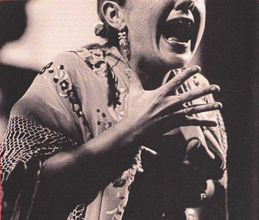 The juerga (flamenco session) began at my place at about 10 p.m. I had an ideal set-up in the Barrio Santa Cruz, the picturesque old Jewish quarter in Sevilla where summertime flamenco can be heard issuing from surrounding plazas. Of course, outdoor juergas are against the law now, but they go on just the same, reminding the old-timers nostalgically of the gay, wide-open Sevilla of thirty years ago.
The juerga (flamenco session) began at my place at about 10 p.m. I had an ideal set-up in the Barrio Santa Cruz, the picturesque old Jewish quarter in Sevilla where summertime flamenco can be heard issuing from surrounding plazas. Of course, outdoor juergas are against the law now, but they go on just the same, reminding the old-timers nostalgically of the gay, wide-open Sevilla of thirty years ago.
“Leche,” they confide, “how you would have enjoyed Sevilla in those days. down by the Siete Puertas every building had a bar, and every bar flamencos. Sevilla had the reputation of being the gaiest town in Spain. It was a kind of tonic; people came from all over Spain to escape their lives and problems in the activity of Sevilla. Now they prohibit singing, dancing, and even the guitar in the bars. It is truly a changed, sad city.”
But this particular juerga was anything but sad. It was one of the many that we had at my place, which were the scandals of the neighborhood. Inappropriately, that romantic tangle of old crooked passages and hidden gardens is inhabited by traditional families with their noses to the social grindstone. They greatly disapprove of gypsies and flamencos in the neighborhood, and more so of people who entertain them.
The juerga was one of the good, serious ones. The artists and the audience were few, and carefully chosen for the ability, knowledge, and compatibility. there were two cantaores, a bailaora, and a guitarist, four of Spain’s non-commercial best, and five listeners, all devout aficionados.
We started out with good Jerez wine, olives, fried fish, chorizo, and conversation, encouraging the old-timers to reminisce about legendary flamencos, and the merits of contemporary ones. They would illustrate their points by singing, or playing, passages of former greats, often comparing them with present styles.
A discussion of two of flamenco’s legendary cantaores arose, and one of the singers, Juan Talega, expounded an interesting comparison: “Antonio Chacón, of course, was a far superior singer, but Manuel Torre, when in the mood, era único (was in a class by himself). his cante struck straight at the heart in a manner that was unbelievable. Chacón, also, was capable of evoking great emotion, but Torre had a duende that only one in a million posesses. the trouble with Torre was that unless he was moved he could not sing at all, while Chacón always sang beautifully.”
Then Juan, who had been a personal friend of both, demonstrated the differences in their styles and approaches to the cante in a manner that would be invaluable in a good anthology.
As the wine took effect faces became illuminated and gaiety paramount, and cantes por bulerías irrepressibly bubbled forth, intermixed with a maze of gypsy guitar falsetas (passages) and an occasional dance. The juerga was soon in full swing, and the music and dance flowed, seriously or lightly as moods changed, into the early hours of the morning.
How dawn arrived so quickly no one could explain, except that in a good juerga hours seem to pass as minutes.
Finally we became restless, and the juerga began developing into good-natured hell-raising. We decided to go out to a neighboring village, a famous outpost of flamencos, for coffee and aguardiente and whatever adventures might arise.
Upon arriving we installed ourselves in a local taberna, and before long were joined by the cement factory workers who began dropping in for their early-morning copitas (eye-openers). (By the time they had both eyes open more than one decided that work could wait, and joined in).
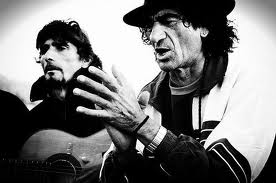 And the juerga carried on, and grew, and grew; we soon outgrew the little taberna, and spilled up the street to a larger, more central café where we were joined by still more of the local flamencos.
And the juerga carried on, and grew, and grew; we soon outgrew the little taberna, and spilled up the street to a larger, more central café where we were joined by still more of the local flamencos.
The town was up and about by now, which added color to the festivities. Groups of chiquillas hazarded by to the accompaniment of devastating flattery (so we thought) and irresistable flamenco. we were the shameless recipients of dagger-like stares thrown by indignant, Mass-bound women in black. The old fellow from the hardware store down the block closed shop and joined us. A few bankers, lawyers, and doctors embarrassedly skittered in, supposedly out on business calls. The festivities became such that even the eternal domino game broke up when an apprentice bartender leaped on the table and danced until he went tumbling, table and all.
The proceedings were becoming a bit scandalous, a local guardia pointed out, in view of which one of the more enthusiastic aficionados, a local bull breeder, prudently suggested we move out to his finca (ranch). We did, en masses.
By this time the juerga was developing into a town fiesta, and we were joined by many of the villages’s adventurous. In the corral of the finca the breeder broke out one of his utreros (young fighting bulls), which proceeded to inflict minor injuries on wine-reckless aficionados. After a few such one-sided encounters, the town hopeful finally jumped in and showed us how to fight, passing the bull time and again with serious naturales and manoletinas to thunderous shouts of “olé”!
“Another Manolete,” his admirers claimed. “Veremos. We’ll see,” replied tough old-timers, who had too often seen young flashes wither away.
Finally the boy turned his back on the bull and stalked to the corral wall, displaying by his coolness his complete domination of the bull. His followers could contain themselves no longer; up on their shoulders he went, to be paraded about the finca in heroic confusion.
By now the countless local aficionados were dancing and singing in large groups about the patio, and the din of boisterous singing, laughing, and shouting began to make our heads throb. During the proceedings some gypsy girls chanced along, and one of the singers proposed that a group of us escape to the tranquility of his place in Alcalá. He is a very fine singer, but one of the non-commercial, non-prosperous breed, and his “place” is a cave cut into a hillside overlooking the river Guadaira, just below the ruins of an old Roman castle. Who could resist the idea.
On arriving we lounged about at the entrance to the cave, sipping fino and feeling mellow and somehow exalted after our night of juerga. Below us women washed clothes in the river, and nude children played blissfully in the high grass along the edge. A donkey stood picketed nearby, watching us with ancient eyes as God must watch fools in their folly. I began stroking the guitar softly, lazily, and the girls sang romantic verses in low, caressing, gypsy voices…
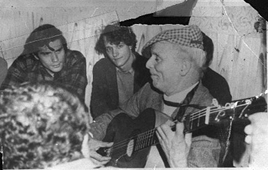 La luna es un pozo chico,
La luna es un pozo chico,
las flores no valen nada,
lo que valen son tus brazos
cuando de noche me abrazan…
The moon is a little well,
flowers are worth nothing,
what is of value are your arms
when at night they embrace me…
As the music blended with faraway sounds, an overwhelming sense of peace pervaded the group. For the moment we were all brothers, differences forgotten, prejudices dissolved…
Across the river distant olive groves simmered in the afternoon sun, and time, and the juerga, droned contentedly on…
IV. JONDO
The jondo flamenco is the means by which a manic-depressive society expresses its black moods. serious and melancholy, it is comparable, emotionally, with the authentic blues of the Negroes of the southern United States….
The fact of being a virtuoso in his field, be it song, dance or the guitar, does by no means qualify an artist for this category. The true flamenco grande artist may, or may not, have an outstanding technique, but it is imperative that he possess the abilities of identifying himself with the duende that he is unfolding and, of equal importance, of being able to transmit this emotion, or series of emotions, to his audience. It cannot be overemphasized that flamenco, above all the jondo flamenco, is basically an emotional art, and that the artist needs only enough technique to enable him to transmit his emotions to himself and to his public. The improving of technique to the point of virtuosity is not usually synonymous with the improvement of the artist’s ability to communicate. Conversely, the opposite is more often true. The virtuoso often becomes a cold machine, too concerned with his technique, too complicated, too entangled in his own virtuosity, too conscious of the fact that the majority of the public is awaiting this virtuosity more than any duende he may impart.
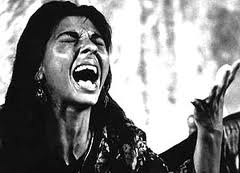
Many exponents of flamenco insist that only the Spanish gypsies and the Andalusians possess the inherent temperamental qualities necessary in the true flamenco. this argument is close to the truth, but there have been exceptions. It is inevitable that the aspirant have an extremely sensitive and receptive nature. Armed with these qualities, he must sally forth, firstly to attain a reasonable technical proficiency, and secondly in search of the elusive duende, for without the duende flamenco is often vulgar and dull, and always disappointing. The quest for the duende is particularly difficult for those living outside of Spain, as it can only be attained through long and constant association with true flamenco in Spain itself, almost necessarily in Andalusia. This statement is sustained by the many inconsolable examples that I have witnessed of recent arrivals to Spain who attempt to dazzle the local flamencos with a sharp technique gained trhough years of arduous lessons, practice, material pilfering from records and tapes, etc., and who are almost invariably dismissed with a shrug and a “no dice ná” “he says nothing”. What these students have to realize is that they have taken only the first step. The second, the search for the duende, is more difficult, and yet a delightful and adventurous undertaking, for the search will bring one into contact with emotional, vibrant people who are living an alluring philosophy; a philosophy difficult to understand by those outside of it, and impossible to absorb if not in constant contact with it…
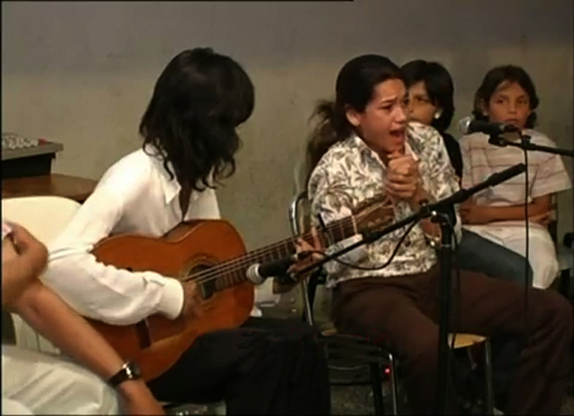
Daniel Shams’ Heliotricity Reviews
“Visionary and timeless music…from a unique and talented singer/songwriter at a crucial point in his continually unfolding artistic development…”
—